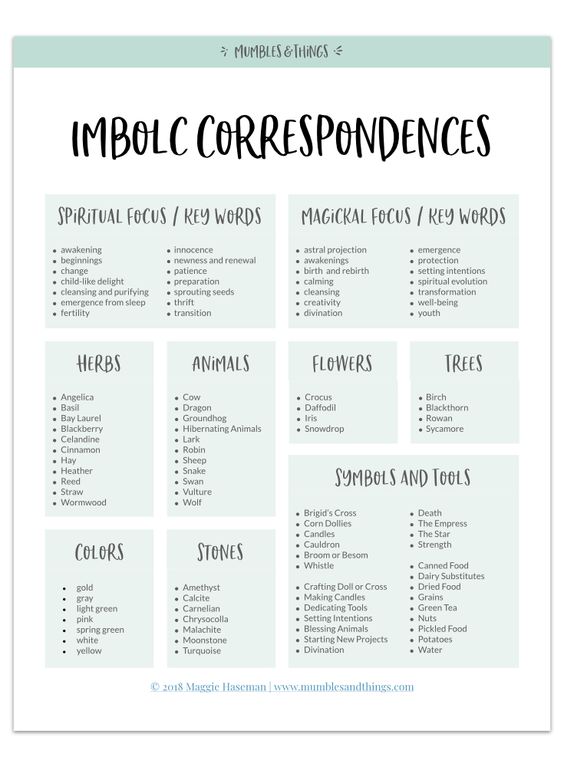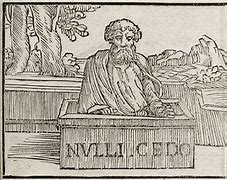(I thought it was important to follow the proceeding article with an update from the USA miltary views on Pagan paths)
Excerpt from the U.S. Army’s Religious Requirements and Practices of Certain Selected Groups: A Handbook for Chaplains (pgs 231-236). Available from:
USAF Chaplain’s Service Institute
Resource Division
525 Chenault Circle
Maxwell AFB
Montgomery, AL 36112-6429
WICCA
OTHER NAMES BY WHICH KNOWN:
Witchcraft; Goddess worshippers; Neo-Paganism, Paganism, Norse (or any other ethnic designation) Earth Religion, Old Religion, Druidism, Shamanism.
Note: All of these groups have some basic similarities and many surface differences of expression with Wicca.
LEADERSHIP:
No central leadership. The Covenant of the Goddess annually elects a First Officer and there is a constitutional limit of two consecutive terms, but in practice officers have almost always served for one year only. In 1991, there are two Co-First Officers, Phoenix Whitebirch and Brandy Williams.
Note: This Covenant does not govern any Coven other than its’ own.
MEMBERSHIP:
Because of the complete autonomy of covens, this cannot be determined. There are an estimated of 50,000 Wiccans in the United States.
Hernes note: This number is now substantially higher and estimated at over 200,000 (now over 1.5 million in 2020). Wicca is currently the fastest growing spiritual path in the U.S.
HISTORICAL ORIGIN:
Wicca is a reconstruction of the Nature worship of tribal Europe, strongly influenced by the Living Nature worship traditions of tribal peoples in other parts of the world.
The works of such early twentieth century writers as Margaret Murray, Robert Graves and Gerald B. Gardner began the renewal of interest in the Old Religion. After the repeal of the anti-Witchcraft laws in Britain in 1951, Gardner publicly declared himself a Witch and began to gather a group of students and worshipers.
In 1962, two of his students, Raymond and Rosemary Buckland (religious names: Lady Rowen and Robat), emigrated to the United States and began teaching Gardnerian Witchcraft here. At the same time, other groups of people became interested through reading books by Gardner and others. Many covens were spontaneously formed, using rituals created from a combination of research and individual inspiration. These self-created covens are today regarded as just as valid as those who can trace a “lineage” of teaching back to England.
In 1975, a very diverse group of covens who wanted to secure the legal protections and benefits of church status formed Covenant of the Goddess (CoG), which is incorporated in the State of California and recognized by the Internal Revenue Service. CoG does not represent all, or even a majority of Wiccans. A coven or an individual need not be affiliated with CoG in order to validly practice the religion. But CoG is the largest single public Wiccan organization, and it is cross-Traditional (i.e. non-denominational).
BASIC BELIEFS:
Wiccans worship the sacred as immanent in Nature, often personified as Mother Earth and Father Sky. As polytheists, they may use many other names for Deity. Individuals will often choose Goddesses or Gods from any of the world’s pantheons whose stories are particularly inspiring and use those Deities as a focus for personal devotions.
Similarly, covens will use particular Deity names as a group focus, and these are often held secret by the groups. It is very important to be aware that Wiccans do not in any way worship or believe in “Satan,” “the Devil,” or any similar entities. They point out that “Satan” is a symbol of rebellion against and inversion of the Christian and Jewish traditions.
Wiccans do not revile the Bible. They simply regard it as one among many of the world’s mythic systems, less applicable than some to their core values, but still deserving just as much respect as any of the others. Most Wiccan groups also practice magic, by which they mean the direction and use of “psychic energy,” those natural but invisible forces which surround all living things. Some members spell the word “magick,” to distinguish it from sleight of hand entertainments.
Wiccans employ such means as dance, chant, creative visualization and hypnosis to focus and direct psychic energy for the purpose of healing, protecting and aiding members in various endeavors. Such assistance is also extended to non-members upon request.
Many, but not all, Wiccans believe in reincarnation. Some take this as a literal description of what happens to people when they die. For others, it is a symbolic model that helps them deal with the cycles and changes within this life. Neither Reincarnation nor any other literal belief can be used as a test of an individual’s validity as a member of the Old Religion.
Most groups have a handwritten collection of rituals and lore, known as a Book of Shadows. Part of the religious education of a new member will be to hand copy this book for him or herself. Over they years, as inspiration provides, new material will be added. Normally, access to these books is limited to initiated members of the religion.
PRACTICES AND BEHAVIORAL STANDARDS:
The core ethical statement of Wicca, called the “Wiccan Rede” states “an it harm none, do what you will.” The rede fulfills the same function as does the “Golden Rule” for Jews and Christians; all other ethical teachings are considered to be elaborations and applications of the Rede. It is a statement of situational ethics, emphasizing at once the individual’s responsibility to avoid harm to others and the widest range of personal autonomy in “victimless” activities. Wicca has been described as having a “high-choice” ethic.
Because of the basic Nature orientation of the religion, many Wiccans will regard all living things as Sacred, and show a special concern for ecological issues. For this reason, individual conscience will lead some to take a pacifist position. Some are vegetarians. Others will feel that, as Nature’s Way includes self-defense, they should participate in wars that they conscientiously consider to be just. The religion does not dictate either position, but requires each member to thoughtfully and meditatively examine her or his own conscience and to live by it. Social forces generally do not yet allow Witches to publicly declare their religious faith without fear of reprisals such as loss of job, child custody challenges, ridicule, etc. Prejudice against Wiccans is the result of public confusion between Witchcraft and Satanism. Wiccans in the military, especially those who may be posted in countries perceived to be particularly intolerant, will often have their dog tags read “No Religious Preference.” Concealment is a traditional Wiccan defense against persecution, so non-denominational dog tags should not contravene a member’s request for religious services.
Wiccans celebrate eight festivals, called “Sabbats,” as a means of attunement to the seasonal rhythms of Nature. These are January 31 (Called Oimelc, Brigit, or February Eve), March 21 (Ostara or Spring Equinox), April 30 (Beltane or May Eve), June 22 (Midsummer, Litha or Summer Solstice), July 31 (Lunasa or Lammas), September 21 (Harvest, Mabon or Autumn Equinox), October 31 (Samhain, Sowyn or Hallows), and December 21 (Yule or Winter Solstice.)
Some groups find meetings within a few days of those dates to be acceptable, others require the precise date. In addition, most groups will meet for worship at each Full Moon, and many will also meet on the New Moon.
Meetings for religious study will often be scheduled at any time convenient to the members, and rituals can be scheduled whenever there is a need (i.e. for a healing). Ritual jewelry is particularly important to many Wiccans. In addition to being a symbol of religious dedication, these talismans are often blessed by the coven back home and felt to carry the coven’s protective and healing energy.
ORGANIZATIONAL STRUCTURE:
Most Wiccans meet with a coven, a small group of people. Each coven is autonomous. Most are headed by a High Priestess, often with the assistance of a High Priest. Some are headed by a High Priestess or High Priest without a partner, and some regard themselves as a gathering of equals. Covens can be of mixed gender, or all female or male, depending on the preferences of the members. Every initiate is considered to be a priestess or priest.
Most covens are small. Thirteen is the traditional maximum number of members, although not an absolute limit. At that size covens form a close bond, so Wiccans in the military are likely to maintain a strong affiliation with their covens back home. There are many distinct “Traditions” of Wicca, just as there are many denominations within Christianity.
The spectrum of Wiccan practice can be described as ranging from “traditional” to “eclectic,” with Traditions, covens and individuals fitting anywhere within that range. A typical difference would be that more traditional groups would tend to follow a set liturgy, whereas eclectic groups would emphasize immediate inspiration in worship.
These distinctions are not particularly important to the military chaplain, since it is unlikely that enough members of any one Tradition would be at the same base. Worship circles at military facilities are likely to be ad-hoc cross-Traditional groups, working out compromise styles of worship for themselves and constantly adapting them to a changing membership.
Therefore, the lack of strict adherence to the patterns of any one Tradition is not an indicator of invalidity. While many Wiccans meet in a coven, there are also a number of solitairies. These are individuals who choose to practice their faith alone. The may have been initiated in a coven or self initiated. They will join with other Wiccans to celebrate the festivals or to attend the various regional events organized by the larger community.
ROLE OF MINISTERS:
Within a traditional coven, the High Priestess, usually assisted by her High Priest, serves both as leader in the rituals and as teacher and counselor for coven members and unaffiliated Pagans. Eclectic covens tend to share leadership more equally.
WORSHIP:
Wiccans usually worship in groups. Individuals who are currently not affiliated with a coven, or are away from their home coven, may choose to worship privately or may form ad-hoc groups to mark religious occasions. Non-participating observers are not generally welcome at Wiccan rituals.
Some, but not all, Wiccan covens worship in the nude (skyclad) as a sign of attunement with Nature.
Most, but not all, Wiccan covens bless and share a cup of wine as part of the ritual. Almost all Wiccans use an individual ritual knife (an “athame”) to focus and direct personal energy. Covens often also have ritual swords to direct the energy of the group. These tools, like all other ritual tools, are highly personal and should never leave the possession of the owner.
Other commonly used ritual tools include a bowl of water, a bowl of salt, a censer with incense, a disk with symbols engraved on it (a “pentacle”), statues or artwork representing the Goddess and God, and candles. Most groups will bless and share bread or cookies along with the wine. All of these items are used in individual, private worship as well as in congregate rituals.
DIETARY LAWS OR RESTRICTIONS:
None.
FUNERAL AND BURIAL REQUIREMENTS:
None. Recognition of the death of a member takes place within the coven, apart from the body of the deceased. Ritual tools, materials, or writings found among the effects of the deceased should be returned to their home coven (typically a member will designate a person to whom ritual materials should be sent). It is desirable for a Wiccan priest or priestess to be present at the time of death, but not strictly necessary. If not possible, the best assistance would be to make the member as comfortable as possible, listen to whatever they have to say, honor any possible requests, and otherwise leave them as quiet and private as possible. (Sind Note Pagans can now have a pentagram on their headstone in any official USA military cemetary)
MEDICAL TREATMENT:
No medical restrictions. Wiccans generally believe in the efficacy of spiritual or psychic healing when done in tandem with standard medical treatment. Therefore, at the request of the patient, other Wiccan personnel should be allowed visiting privileges as though they were immediate family, including access to Intensive Care Units. Most Wiccans believe that healing energy can be sent from great distances, so, if possible, in the case of any serious medical condition, the member’s home coven should be notified.
OTHER:
With respect to attitude toward military service, Wiccans range from career military personnel to conscientious objectors. Wiccans do not proselytize and generally resent those who do. They believe that no one Path to the Sacred is right for all people, and see their own religious pattern as only one among many that are equally worthy. Wiccans respect all religions that foster honor and compassion in their adherents, and expect the same respect. Members are encouraged to learn about all faiths, and are permitted to attend the services of other religions, should they desire to do so.
GENERAL SOURCE BOOKS:
Note by Herne: Since this was written by the military, the list of books available has grown subtantially. For more topics and titles, see our Suggested Reading List.
The best general survey of the Wiccan and neo-Pagan movement is: Adler, Margot. Drawing Down the Moon. Boston: Beacon Press, 1986. 595pp
For more specific information about eclectic Wicca, see: Starhawk. The Spiral Dance. New York: Harper & Row, 1979.
For more specific information about traditional Wicca, see: Farrar, Janet, and Stewart Farrar. Eight Sabbats for Witches. London: Robert Hale, 1981. 192pp.
The Witches’ Way. London: Robert Hale, 1984. 394pp.
FOR MORE INFORMATION, CONTACT:
Pagan Military Newsletter c/o Terri Morgan, Editor, 829 Lynnhaven Parkway 114-198 Virginia Beach, VA 23452
Because of the autonomy of each coven and the wide variance of specific ritual practices, the best contact person would be the High Priestess or other leader of the member’s home coven.













You must be logged in to post a comment.